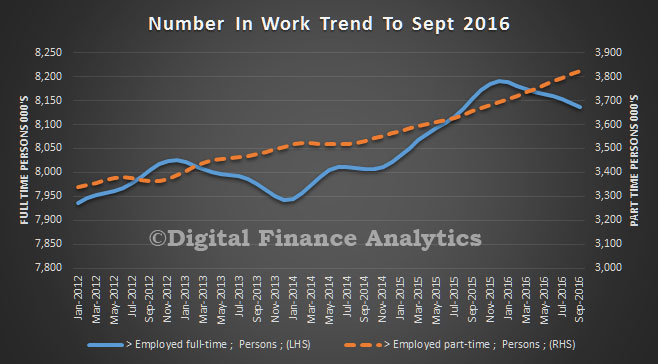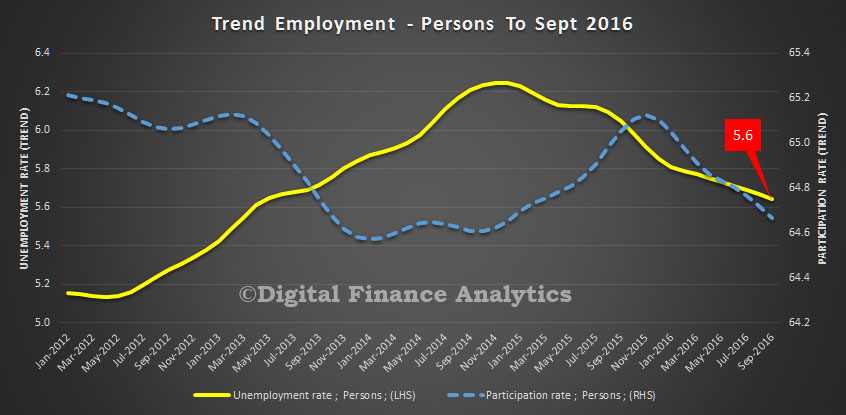Monthly trend employment in Australia increased slightly in September 2016, according to figures released by the Australian Bureau of Statistics (ABS) today. But the numbers seem a bit weird, with a fall in the number of full time jobs, a rise in part time jobs, and the participation rate down just a tad. Yet the number of hours worked rose significantly. Strange. Can we trust the data? Expectations were for a rise in jobs, so the results are below expectations.
In September 2016, trend employment increased by 3,900 persons to 11,959,500 persons – a monthly growth rate of 0.03 per cent. This is down from the monthly employment growth peak of 0.28 per cent in September 2015. Trend part-time employment growth continued, with an increase of 11,800 persons, while full-time employment decreased by 7,900 persons.
”The latest Labour Force release shows further increases in part-time employment. There are now 130,000 more persons working part-time than in December 2015, while the number working full-time has decreased by 54,100 persons,” said the Program Manager of ABS’ Labour and Income Branch, Jacqui Jones.
The trend monthly hours worked increased by 2.2 million hours (0.1 per cent), though it is still below the high in December 2015.
The trend unemployment rate decreased slightly (by less than 0.1 percentage points) to 5.6 per cent, and the participation rate decreased 0.1 percentage points but remained steady at 64.7 per cent in rounded terms.
Trend series smooth the more volatile seasonally adjusted estimates and provide the best measure of the underlying behaviour of the labour market.
The seasonally adjusted number of persons employed decreased by 9,800 in September 2016. The seasonally adjusted unemployment rate for September 2016 decreased by 0.1 percentage points to 5.6 per cent, and the seasonally adjusted labour force participation rate decreased by 0.2 percentage points to 64.5 per cent.
The ABS seems to indicate concerns with the data quality: “The incoming rotation group in Queensland for September 2016 was considerably different to the rest of the Queensland sample and its influence has been temporarily reduced as part of the estimation process. The data will be further reviewed when October data are available”


